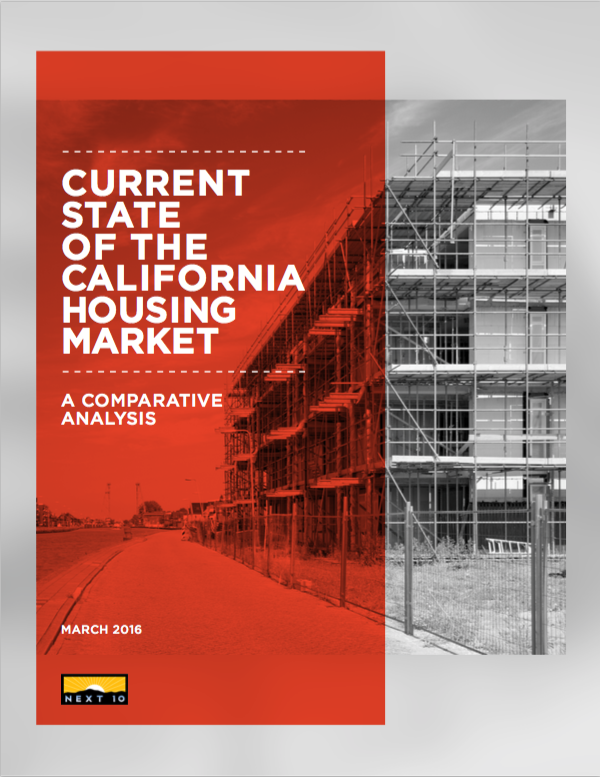Publications
Current State of the California Housing Market (2016)
Despite having the third highest rate of low-wage job creation in the nation, California could face a shortage of low-wage workers as housing costs push residents out in search of affordability.
According to a trio of new studies, low- and middle-wage workers are leaving California even as large numbers of higher-wage earners continue to arrive. And all together, more people are moving out than moving in.
California's current housing market suffers from a shortage of supply and the lingering effects of the housing crash and the Great Recession. California currently ranks near the bottom in terms of its supply of housing relative to population growth. Add that to the increasing demand to live near the coast, to be close to tech hubs, and to be near downtowns, and it's not too surprising that home prices throughout the state continue to rise. Additionally, the cost of development and stringent regulations imposed on developers has contributed to the lack of homebuilding in California.
To alleviate the housing affordability crisis that plagues low-income and middle-income households in the state, more housing construction needs to take place. One such way would be by streamlining the permitting process and finding a way to reduce concerns about environmental protection policies, in addition to encouraging more residential development along California coastal cities and, if possible, an increase in the residential density of such developments.
More information on California housing compared to other states available at Compare50.org, and the other two reports are under the Additional Resources tab.
Next 10 does not own the rights to this publication. Usage of this content is subject to permissions, please contact us at info@next10.org for more information.
- Homeownership rates, which have historically been low compared to rates in other states, have been declining throughout California, as many residents - especially those with recent foreclosures on record - remain unqualified for mortgage loans. In 2014, California ranked 49th in terms of homeownership, as only 53.8% of homes were owner-occupied.
- Housing costs are high relative to incomes and have been increasing in recent years for both homeowners and renters. California's average homeowner spent 25.4% of their household income on housing costs in 2014, more than homeowners in any other state.
- Housing remains overcrowded as the proportion of renter-occupied housing units with more than one person per bedroom grew from 12.7% in 2007 to 13.2% in 2014.
- Home prices are more expensive than in all other states, particularly in major metropolitan areas. Diminishing levels of affordability have already driven many low-income and middle-income households to migrate to more affordable states.
- Housing remains in short supply, placing upward pressure on home prices and reducing levels of affordability. From 2005 to 2015, permits for only 21.5 housing units were filed for every new 100 residents in California, less than any other state except Alaska.
